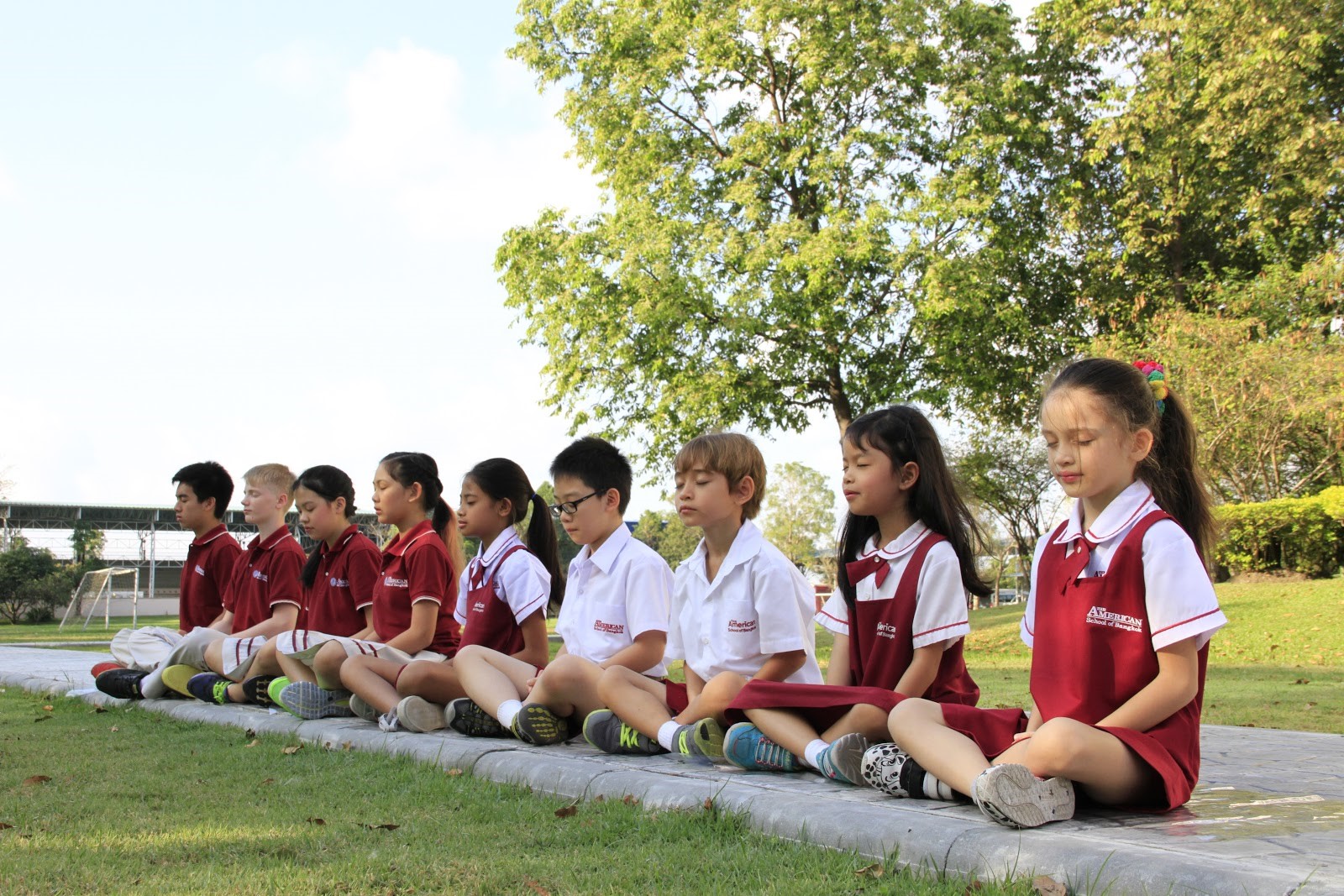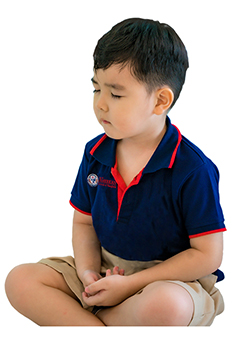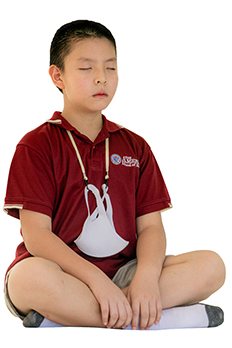The Mindful Education Initiative was founded on the principle that effective education requires the integration of mental, emotional, and character training into the overall school curriculum. The increased prevalence of anxiety, stress, and depression in today’s youth suggests that our society is not sufficiently preparing students for the emotional and physical demands they are facing. The Mindful Education was created to address this need.

The Mindful Education Initiative aims to give both students and teachers the training they need to develop skills of self-care and personal well-being. The training is based on the practice of mindfulness, the process of placing gentle attention on what you are experiencing in the present moment, such as the sensations of breathing, sounds in the environment, or even thoughts and emotions. Through practicing mindful awareness, students cultivate greater attentional stability (i.e. concentration and focus) and increased emotional self-regulation, as well as more empathy towards other students and towards themselves.
The recent growth of mindfulness in schools and universities around the world is largely due to its earlier success in the fields of medicine and psychotherapy. Hospitals and mental health professionals began implementing mindfulness programs in the late 1970s and saw incredible results for patients. Since then, there have been a wealth of both clinical and epidemiological research studies addressed at understanding the effects of mindfulness practice on human health and well-being. We are only now beginning to understand some of the underlying mechanisms behind these benefits, but what is clear is that mindfulness can help with a host of problems facing today’s youth.
1.6.1 Just What is Mindfulness?
 Mindfulness is the process of bringing non-judgemental attention to whatever a person is experiencing in their present moment (Kabat-Zinn, 1990). This may be experienced in the body, such as the sensations associated with breathing, sitting, moving, listening, etc., or experiences in the mind, such as thoughts, feelings, or emotions. In mindfulness, individuals practice being aware of their experiences without judging them as good or bad, and instead observe and accept them as they are.
Mindfulness is the process of bringing non-judgemental attention to whatever a person is experiencing in their present moment (Kabat-Zinn, 1990). This may be experienced in the body, such as the sensations associated with breathing, sitting, moving, listening, etc., or experiences in the mind, such as thoughts, feelings, or emotions. In mindfulness, individuals practice being aware of their experiences without judging them as good or bad, and instead observe and accept them as they are.
Being aware of one’s experiences without judgment is difficult. In fact, throughout an individual’s life, both in schools and at home, making judgments is encouraged. Mindfulness takes a different approach, cultivating a less reactive view of the world. With consistent practice, non-judgemental awareness becomes easier over time. In this way, mindfulness should be approached as a skill that requires training, rather than an academic subject that can be objectively learned.
1.6.2 Where Does Mindfulness Come From?

The practice of mindfulness has its roots in the Buddhist meditation tradition, dating back over 2500 years. In the past 40 years, these practices have been adapted for a secular audience in hospitals, universities, corporations, and now in primary and secondary schools around the world. It is important to understand that mindfulness is not a religion. It is completely secular, and there is no need for changing or abandoning one’s religious or spiritual beliefs in order to reap the benefits of mindfulness practice. Mindfulness is simply a means of cultivating mental strength, clarity, and wisdom. Mindfulness practice has also become a university requirement for graduates in the field of medicine, psychological counseling and therapy, and educational administration. A few examples of universities that have adopted mindfulness requirements are:
- United States of America: Columbia University, Rutgers University, University of North Carolina, and Stanford University
- United Kingdom: University of Cambridge, Oxford University, and the University of Exeter
- Canada: McGill University
Examples of multi-billion dollar companies that have adopted mindfulness for their staff are Bose, Google, P&G, Goldman Sachs, Apple & eBay.

Mindfulness initially found its footing in the U.S. in the form of the Mindfulness-Based Stress Reduction program (MBSR), developed in the late 1970s by Dr. Jon Kabat Zinn as a method for treating hospital patients suffering from chronic pain. The MBSR program was incredibly successful and has now spread so far and wide that an MBSR clinic can be found in almost every major hospital in the US. Following the success of mindfulness in the field of medicine, clinical psychologists and therapists soon started using mindfulness in their therapy and counseling sessions, most recognizably in the form of Mindfulness-Based Cognitive Therapy (MBCT).
In the past few decades, mindfulness has spread far beyond hospitals and therapist’s offices. Corporations are offering mindfulness trainings in their workplaces to increase the effectiveness and overall well-being of their workers. Even the U.S. military is implementing mindfulness training for soldiers to deal with stress on and off the battlefield.
1.6.3 Mindfulness in Education

In recent years, the number of academic institutions that are embracing mindfulness as a method for enhancing student performance and well-being is dramatically increasing. Schools around the world are now actively implementing programs that recognize the importance of nurturing a child’s social, emotional, mental, and cognitive well-being (Garrison Institute Report, 2005; Tregenza, 2008; Yager, 2009).
 When mindfulness is effectively implemented into a classroom, students have an enhanced ability to respond to their academic and social challenges. By being mindful, students gain a clearer understanding of how their thoughts and emotions impact their quality of life. Extensive research shows that mindfulness leads to reduced stress levels, fewer behavioral problems, increased self-esteem, improved academic performance, and better concentration in the classroom.
When mindfulness is effectively implemented into a classroom, students have an enhanced ability to respond to their academic and social challenges. By being mindful, students gain a clearer understanding of how their thoughts and emotions impact their quality of life. Extensive research shows that mindfulness leads to reduced stress levels, fewer behavioral problems, increased self-esteem, improved academic performance, and better concentration in the classroom.
 1.6.4 Benefits of Mindfulness in Education
1.6.4 Benefits of Mindfulness in Education
- Increased academic performance
- Decreased anxiety in general and text anxiety in particular
- Increased attention
- Increased self-esteem
- Increased executive function (memory, planning, and impulse control)
- Increased emotional regulation
- Increased self-calming
- Increased social skills and social compliance
- Increased care for others
- Decreased negative affect, or emotions
- Decreased depression
- Increased sense of calmness, relaxation, and self-acceptance
- Increased quality of sleep
Source: Association for Mindfulness in Education






